

Discussion Series
Join us for a Script Club with the Portland Public Library. Check out your copy of the script and join us two weeks before opening of each Mainstage Production. Scripts are available at the reference desk at the Main Branch of the Portland Public Library. This year discussions will be held in the Rines Room at 1:30pm two weeks before a show opens. Feel free to come and chat about the plays with Literary Manager, Todd Brian Backus; his Directing and Dramaturgy Apprentices, and special guests. Visit portlandlibrary.com/programs-events/ for more information.
The Artistic Perspective, hosted by Artistic Director Anita Stewart, is an opportunity for audience members to delve deeper into the themes of the show through conversation with special guests. A different scholar, visiting artist, playwright, or other expert will join the discussion each time. The Artistic Perspective discussions are held after the first Sunday matinee performance.
Curtain Call discussions offer a rare opportunity for audience members to talk about the production with the performers. Through this forum, the audience and cast explore topics that range from the process of rehearsing and producing the text to character development to issues raised by the work Curtain Call discussions are held after the second Sunday matinee performance.
All discussions are free and open to the public. Show attendance is not required. To subscribe to a discussion series performance, please call th e Box Office at 207.774.0465.

DRAmAtuRg KimmARiE mccRANN, PLAywRight BEss wELDEN, AND ARtistic DiREctOR ANitA stEwARt, iN A tALKBAcK AftER Madeleines By BEss wELDEN At PORtLAND stAgE cOmPANy.
Eleanor by Mark St. Germain
PlayNotes Season 52 Editorial Staff
Editor in Chief Todd Brian Backus
Contributors
Skyler Brianna, Vivian Chace, Max Lerin, Eli Mowry, Jack Allen Murphy, and Kaushik Raghavan
Copy Editor
Adam Thibodeau
Cover Illustration
Aressa Goodrich
Portland Stage Company Educational Programs, like PlayNotes, are generously supported through the annual donations of hundreds of individuals and businesses, as well as special funding from:
The Simmons Foundation



Susie Konkel
Harold & Betty Cottle Family Fund
Letter from the Editors
Dear PlayNotes Readers,
We're so excited to have you with us for our first show of the season, and our latest edition of Playnotes!
In this issue, we explore the world of Eleanor by Mark St. Germain. Eleanor is an up-closeand-personal examination of the most important First Lady in history, the times in which she lived, and the personal cost of being the largely private wife of a public figure, President Franklin D. Roosevelt, who loomed larger than life at a time when this nation, and the world at large, needed him most.
Want to learn about this production of Eleanor? Head over to "An Interview with the Director: David Ellensetin” (pg. 8), and meet our actor in "About the Character" (pg. 9). For a special look into Eleanor's rumoured lovers, check out "Eleanor and Hick (and Earl...)" (pg. 14). Want to know more about the history of polio and vaccines? Check out "Polio and Vaccines: Things of the Past?" (pg. 24)
Are you curious about the cultural and political climate during Eleanor's lifetime? Check out " Eleanor on the World's Stage: A Timeline of her Life and World Events" (pg. 16), or "The First First Lady" (pg. 12). Want to learn more about the playwright himeself? Take a look at "About the Play" (pg. 6).
When compiling each issue of PlayNotes, we strive to provide articles and interviews that give you insight into what the process has been like behind the scenes (see articles in "Portland Stage's Eleanor" ), contain pertinent information about the play’s setting and major themes (“The World of Eleanor ”), and provide deeper dives into specific subjects that compelled our literary department (“Digging Deeper”). We include a list of books, plays, recipes, and other media that we hope audiences will access for more cultural content that relates to the play (“Recommended Resources”).
We are delighted to have you join us for this production, and we hope you enjoy seeing Eleanor.
Sincerely yours,
The Portland Stage Literary Department
Todd Brian Backus
Skyler Brianna
Max Lerin
Kaushik Raghavan
About the Play
by Todd Brian Backus
Eleanor by Mark St. Germain is a stunning portrait of Eleanor Roosevelt, one of the most influential women in American history. As the narrator, First Lady Eleanor spins a tale of politicians, society, and the small moments between historical giants, taking us from her childhood through the presidency, and from affairs of the heart to affairs of state. This tourde-force solo show of the first lady we think we know explores quiet, private memories that made Eleanor who she was: an advocate for the underdogs, a paragon of fairness, and, above all, the heart of the country. As she weaves the tale of her public and private lives, we see her at times both strong and vulnerable. The impact of the passionate and unforgettable woman at the heart of her husband’s presidency cannot be understated.
Eleanor was originally commissioned by the Florida Studio Theatre as part of the Suffrage Centennial (2020). St. Germain had done a host of research on the Roosevelts for a different project and decided to see if there was anything
that would meet the present moment. When asked why he chooses to write historical portraits instead of more contemporary characters, Germain said, "I do it because of the times we live in, and I want to make some political statements. I could put those words in the mouth of a contemporary character, but I feel that’s what everyone who is anti-Trump is saying. It’s more impactful if those statements come from an historical character. Eleanor was a true democrat and didn’t think that liberal was a dirty word. She believed in public service and was inspirational to me."
After readings at Florida Studio Theatre and then Barrington Stage Company in Massachusetts, Eleanor went on to premiere at Barrington Stage and has been seen at stages across the country. David Ellenstein directed the show at Laguna Playhouse and North Coast Rep in California, and now brings his production to Portland Stage with Kandis Chappell reprising her role as Eleanor.

ELEANOR - KANDis chAPPELL (AEA) sEAtED By mONumENt PhOtO By AARON RumLEy - cOuRtEsy Of NORth cOAst REPERtORy thEAtRE.
Pre-Show Questions & Activities
by Eli Mowry & Jack Allen Murphy
1. Eleanor Roosevelt describes her relationship with her husband, Franklin, as more of a business or political partnership than a marriage of love. In what ways is their relationship different from a more private one? Can people in the public eye lead “normal” lives?
2. Eleanor compares the relationship she had with her father to the one with Franklin. Compare and contrast their roles in her life.
3. The script calls for an image of a statue of grief. In this production, there is a full statue onstage. How does the presence of a physical statue change the play?
4. The article “A History of One Person Shows” (pg 22) describes how solo performances can provide space for political commentary, specifically for LGBTQ+ and other marginalized communities. How might this insight have affected the decision to make Eleanor a solo show?


1. Eleanor and Franklin Roosevelt led the country through four presidential terms from 1933 to 1945. Have each person in a small group pick a major problem America was facing during this time. Do some research on your own and then come back as a group. Discuss the impact your problem had on the country.
2. During his presidency, Franklin Roosevelt dealt with the terrible effects of polio. Write a short story from the perspective of someone living in this time period, handling the outbreak as best they can. Use the article “Polio and Vaccines: Things of the Past?” (pg. 24) as some inspiration.
3. Eleanor is a solo show, meaning there is only one actor on stage. Find a partner to work with. One of you will make a list of “pros” for solo performance and one of you will make a list of “cons.” Brainstorm as many pros or cons as you can think of, and debate the merits of solo performance.
4. Eleanor is a one-woman show about the life and times of Eleanor Roosevelt. What other celebrity or historical figure would you want to hear more from? Write a monologue from their perspective about what’s important to them.
An Interview with the Director: David Ellenstein
by Max Lerin

DiREctOR DAviD ELLENstEiN
Directing and Dramaturgy Apprentice Max Lerin interviewed director David Ellenstein about his process and experience directing Eleanor.
Max Lerin (ML): What made you want to start directing?
David Ellenstein (DE): My father was an actor and a director, so having both of those skills was a natural progression. Mostly an actor in my early career, I observed so many directors that didn't seem to understand the requirements of being a successful director. They didn't understand how to stage in order to keep the picture interesting and keep it from becoming static. Even more, they didn't understand when an actor needed help and what to say in order to help them. What often seemed obvious to me was just said or acted upon. I took the opportunities as they arose and I had success doing so. A lifetime in the theater prepared me to be a leader in the rehearsal room.
ML: You've already directed Eleanor in California. How do you expect the play might land differently in Maine?
DE: I believe the person Eleanor is such a universally respected person that it will land with the same resonance as it did in California. Being a New Englander herself, there may be new resonance that didn't happen in California as the Maine audiences recognize things that are close to home.
ML: How do you see Eleanor's story as relevant today?
DE: She was a humanist. Though a staunch Democra she crossed bounds by being respectful and caring of all people. Her philosophy of being of service is one that is so needed in today's world.
ML: What excites you most about working on this production?
DE: Just how powerfully her persona lives on and still touches people. Returning to Portland Stage where I have had such good experiences in the past—and working again with Kandis Chappell, who is a superb actress.
ML: In researching Eleanor's life, did you learn anything that surprised you?
DE: Many things—some of which are in the play. Eleanor's profound effect upon the country and her major impact on the progress of women's rights. Many details of her personal life and history. I had no idea how many accomplishments she had. How influential she was to society and what a big impact she had on women's rights and on women as a voice in politics. I was also unaware of the personal turmoil that went on in her life. The play does not shy away from those topics.
ML: How does the process of working on a one-woman show differ from directing plays with larger casts?
DE: It is all on Kandis. My job is to be her mirror and help to make sure the flow of the text is clear and not static. To create a framework for the actor to perform in that helps to tell the story. Staging is simpler with only one person— less traffic patterns to worry about.
ML: Is there a particular exercise or technique you find most useful in the rehearsal room?
DE: It varies with the skill and experience of the actor—also with the style and demands of the play. For this one, working with a consummate professional, it is about leaving room for her to do her work and shaping around that.
ML: What do you hope audiences will take away from this play?
DE: Knowledge, joy, a sense of purpose, and an appreciation of how the theater can celebrate what is good about being a human being.
About the Character
by Todd Brian Backus
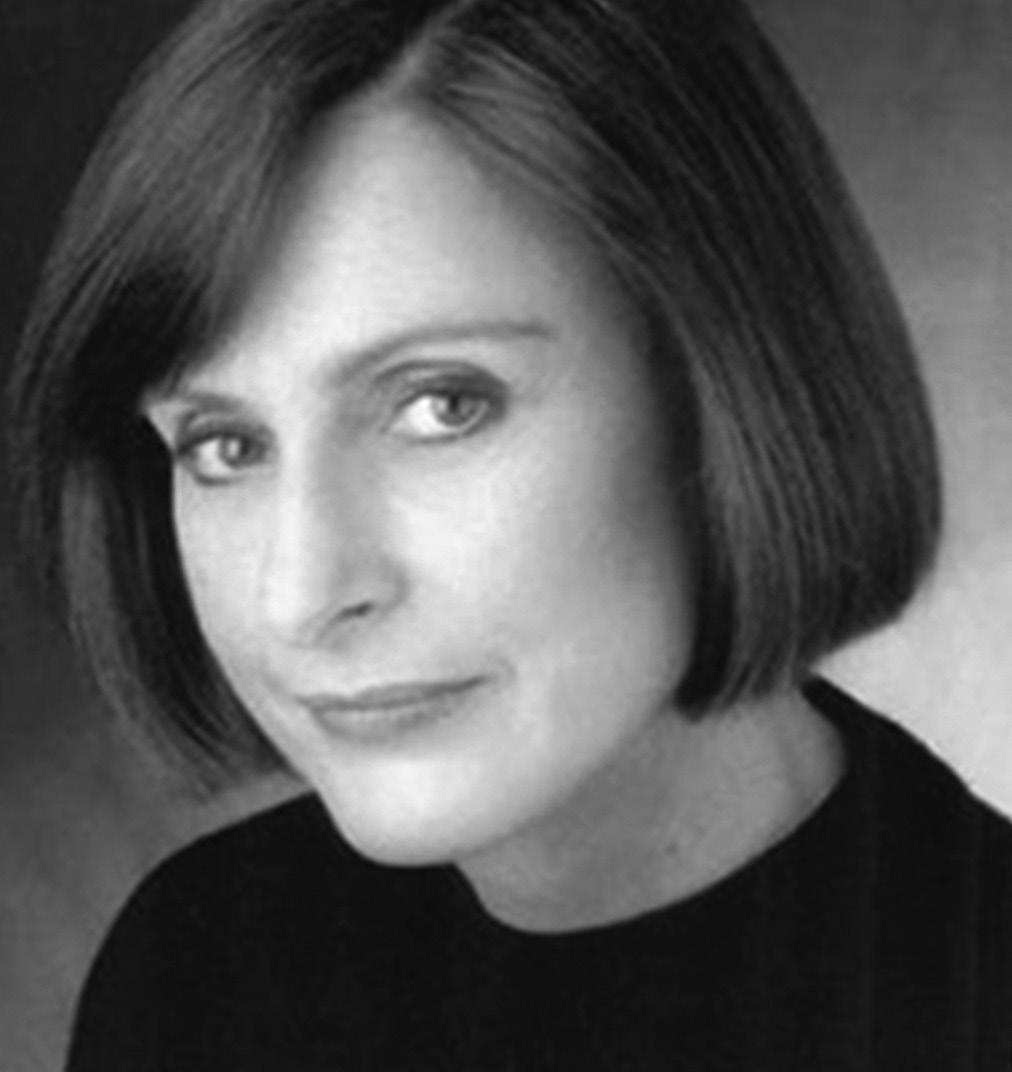
Actor: Kandis Chappell (AEA)
Character: Eleanor Roosevelt, First Lady of the United States. Born to a wealthy family, Eleanor worked diligently on behalf of many causes throughout her days as a socialite and during her husband's political career. For the purposes of this play she is also, notably, dead.
Post-Show Questions & Activities
by Eli Mowry & Jack Allen Murphy
1. Eleanor makes the decision to move on and forgive Franklin in the end. What do we think spurred this decision, despite all that we now know about their private lives?
2. What are some of the ways that grief is explored in the show? Aside from her death, what else does Eleanor regret about her life’s work?

1. While Eleanor is a one-woman show based on an historical figure, solo shows are done about all sorts of people. Write the outline of a solo show about your life. What events would you include? What props and costumes will you need? Who would you cast to play you?
2. In groups, discuss the perspective of the show. Is Eleanor omniscient, or is her view limited? Do you believe she is always telling the truth? Make sure to give examples from the show.
3. One of the valuable things Eleanor gifts to the audience is how to speak publicly. Write a short speech about something you’re passionate about. It can be about anything you want, as long as you feel comfortable presenting it later. Make sure to practice either in front of a mirror or with a friend!
The Roosevelt Family Tree
by Kaushik Raghavan







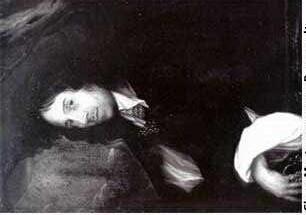


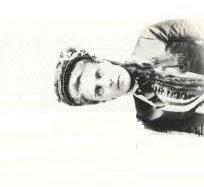
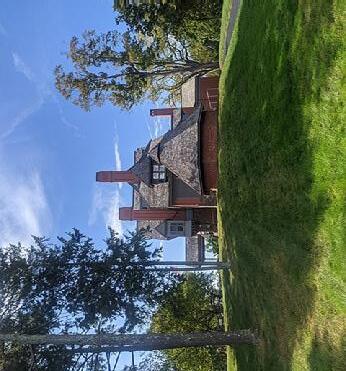

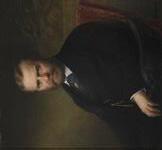




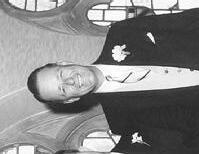



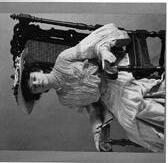
The First First Lady
by Todd Brian Backus

Anna Eleanor Roosevelt was born October 11, 1884, part of the Oyster Bay branch of the Roosevelt family along with her uncle and godfather Theodore Roosevelt. Later in life she would go on to marry her fifth cousin once removed, Franklin Delano Roosevelt of the Hyde Park branch, and would become the longestserving first lady in American history. How did Anna become Eleanor? Read on to find out!
Facing hardship at just eight years old, Eleanor lost her mother to diphtheria. Two short years later, she lost her father, and would then be raised mostly by her maternal grandmother with plenty of affection from her uncle Teddy Roosevelt. Her parents’ deaths and her low self-esteem (prompted by her mother’s insistence she wasn’t pretty enough to keep people in her life) meant Eleanor looked to make herself useful to people in all things. As she got older, she joined the Junior League
and worked to teach immigrant children in the Lower East Side of New York City. One day, Franklin dropped in to join Eleanor as she was teaching, and she asked him to help carry a little girl home who had fallen ill. Franklin was shocked by the state of the tenements people lived in. While both Roosevelts were children of privilege, Eleanor worked hard to make things better for the working man. This drive would stay with her throughout her life.
After their marriage in 1905, they had a few quiet years before Franklin made his first entry into political life in 1910, winning a seat in the New York State Senate. As World War I picked up, Franklin was appointed the Assistant Secretary of the Navy. Eleanor helped in her own way, spending time helping at rail yards with the Navy Red Cross and Navy Relief Society. She would go on to inspect mental hospitals and lobby for better conditions and resources for all. As the war came to an end, Franklin made a failed bid for the vice presidency in 1918. Eleanor, meanwhile, made use of her skills with the brand new League of Women Voters and began working with many members of the women's suffrage movement.
In 1921, their lives together would change as Franklin caught polio and lost most of the use of his legs. Eleanor became more of a public figure during this time, giving talks at luncheons for the Women's Division of the Democratic Party. She would soon join other activist organizations, like the Women's Trade Union League. She lobbied for the League of Nations, the five-day work week, and the end of child labor. In 1928, Franklin returned to politics as the Governor of New York. This change made Eleanor put her lobbying aspirations on hold as she felt it would look unseemly to lobby as the First Lady of New York.
Eleanor stood by Franklin as he won a second term as governor in 1930 and then the presidency in 1932. Slightly dismayed at the prospect of being a handshaker-in-chief as first lady, Eleanor resolved to do more and have her own projects. She privately lobbied Franklin for
ELEANOR ROOsEvELt ON hER wEDDiNg DAy iN 1905.

ELEANOR ROOsEvELt LAtER iN LifE.
a women's camp of the Civilian Conservation Corps (CCC), as well as appointing more women to government positions. She started a regular radio broadcast and hosted her own press conferences; eventually her “My Day” newspaper column would be syndicated six days a week. Eleanor then took the helm with Arthurdale, a planned rural community to resettle out-of-work coal miners.
Eleanor worked to obtain positions for African American educator and activist Mary McLeod Bethune, which led to Franklin appointing his "Black Cabinet," a set of second-level officials who worked to ensure the New Deal programs did not discriminate. While segregation still existed within the local branches of the CCC, Bethune felt African Americans were being heard by the White House for the first time.
Near the end of Franklin’s second term, World War II broke out. After the attack on Pearl Harbor, Franklin signed an executive order forbidding all "enemy aliens" from Germany, Italy, and Japan from owning weapons, cameras, or radios. Eventually the government relocated American citizens of Japanese descent, who they conveniently referred to as "non-aliens," as well as Japanese immigrants to internment camps. In 1943, Eleanor lobbied for Franklin to close the camps, thinking internment had been a mistake that needed correcting. The president would wait until after the 1944 election to do so.
As the war continued, Eleanor visited service men throughout the South Pacific with the Red Cross, taking time to get to know each of the patients in hospitals and personally writing to each of their families. She was considered "America's Mother" and did her best to make sure everyone felt seen and cared for. In April 1945, Franklin suffered a brain hemorrhage and died. While Eleanor spent time serving as the ceremonial widow for a time, she couldn't sit still for long. After the war came to its explosive finish, Eleanor was appointed to the United Nations General Assembly where she would eventually help draft the Universal Declaration of Human Rights.
Eleanor, like her husband Franklin, hoped for a lasting peace in the post-war era. She worked tirelessly to achieve it. She gave hundreds of speeches, traveled on fact-finding missions, and served as an unofficial ambassador for the United States. When criticized for urging dialogue with Moscow she said, "We have to face the fact that either all of us are going to die together or we are going to learn to live together, and if we are to live together we will have to talk." Eleanor Roosevelt dedicated her life to the service of others and we could all be instructed by her legacy.

Eleanor and Hick (and Earl...)
by Max Lerin
Amidst all of the scholarship on Eleanor Roosevelt’s life, there is a plethora of speculation on Eleanor’s extramarital affairs. The most common name to surface is journalist Lorena “Hick” Hickok. The way their relationship is characterized among historians varies greatly, ranging from simply good friends to romantic and sexual lovers.
Eleanor Roosevelt first met Hick in 1928 when she was working for the Associated Press (AP). Hick was covering FDR at the time and didn’t take much interest in Eleanor at first, preferring to focus on the “big story.” In 1932, while working as the only female reporter on the “Roosevelt Special”—the train by which FDR and his team traveled on his campaign tour—Hick befriended Eleanor’s secretary, Malvina Thompson, who was more commonly known as “Tommy.” According to Susan Quinn in her book Eleanor and Hick: The Love Affair that Shaped a First Lady, Hick and Tommy “were born the same year, came from the working class, smoked, drank, and held strong opinions.” Hick and Tommy began to confide in one another about their pasts. Tommy shared childhood memories of her father, prompting Hick to open up as well. Hick told Tommy about her mother dying at thirteen, her abusive father, and how she was kicked out at fourteen and left to fend for herself. When Eleanor heard about Hick’s story from Tommy, it piqued her interest. She began giving Hick more journalistic

opportunities and inviting her to more events, where she had previously been more standoffish (as she tended to be with reporters in general). As they began to spend more time together, Hick’s interest in Eleanor grew, and she eventually snagged the job of reporting primarily on Eleanor, rather than FDR. After that, the two became practically inseparable.
Eleanor and Hick’s relationship was built on a mutual trust. As a near constant presence in Eleanor’s life, Hick was privy to information that, had she prioritized publishing the juiciest story, could have damaged the first lady’s reputation. Many of Eleanor’s closest friends were lesbians, including Nancy Cook and Marion Dickerman, a lesbian couple who Eleanor frequently entertained and hosted at Val-Kill, her private cottage in Hyde Park, NY. Though Eleanor primarily used the cottage to entertain friends rather than family, Hick reported that the cottage was built “‘in order that the children might learn to live without servants.’” Hick’s statement wasn’t necessarily a lie–simply a protective version of the truth. Another such instance was Hick’s silence on Eleanor’s relationship with Earl Miller.
There was speculation that Eleanor had an affair with a man named Earl Miller, her husband’s former bodyguard who was later assigned to her. Eleanor and Earl were friendly and affectionate to a degree that raised some eyebrows. According to Geoffrey C. Ward and Ken Burns’ The Roosevelts: An Intimate History, Earl “taught her to shoot, gave her tennis lessons, bought her a horse, encouraged her to ‘try to smile’ when photographers came near.” There is also documentation of a home movie made by Eleanor, Earl, and Marion Dickerman entitled “The Pirate and the Lady,” in which Earl pretends to kidnap Eleanor in what presents as a quite physical and flirtatious manner—to the point where Marion and her partner Nancy worried that he sometimes seemed to “manhandle” her. Despite their joint denial of any romantic or sexual relationship, Earl’s third wife threatened to cite Eleanor as a reason for the dissolution of their marriage.
ELEANOR ROOsEvELt, mARiON DicKERmAN, AND NANcy cOOK ON cAmPOELLO isLAND, NEw BRuNswicK cANADA iN JuNE 1926

There is also less evidence about the nature of Earl’s relationship with Eleanor since they both burned all their letters. Their relationship was yet another controversial aspect of Eleanor’s life that Hick refrained from reporting on. As their trust grew, Eleanor and Hick confided more and more in one another. They both held secrets—“Hick because she was a lesbian, in a time where her kind of love was considered immoral and shameful, and Eleanor because she had to pretend she was happily married,” according to Susan Quinn. Hick told Eleanor about her former partner, Ellie, who she considered the love of her life up until she met Eleanor. Quinn writes that Eleanor revealed to Hick “how unloved she felt in her marriage and how disappointed she was in the ‘great man’ everyone else idolized.” It was a risky confession, as Hick was still a reporter, but by this point Eleanor knew Hick’s devotion would not betray her.
According to most historians’ accounts of Eleanor Roosevelt’s life, Hick was considered Eleanor’s “very good friend,” despite a myriad of evidence indicating their romantic and possibly sexual relationship. They often wrote to one another expressing intense affection and longing, and though Eleanor burned her letters in what could have been an attempt to bury this evidence, Hick kept all of hers. On March 6, 1933, Eleanor writes to Hick:
Hick darling, Oh! how good it was to hear your voice, it was so inadequate to try & tell you what it meant, Jimmy was near & I couldn’t say ‘je t’aime et je
t’adore’ as I longed to do but always remember I am saying it & that I go to sleep thinking of you & repeating our little saying.
The day after that, Eleanor wrote:
Hick darling, All day I’ve thought of you & another birthday [when] I will be with you, & yet to-night you sounded so far away & formal, oh! I want to put my arms around you, I ache to hold you close. Your ring is a great comfort, I look at it & think she does love me, or I wouldn’t be wearing it!
In two separate letters from the same week, Eleanor describes wanting to kiss Hick but settling for kissing a photograph of her instead, and in yet another letter from that week, she writes:
Remember one thing always, no one is just what you are to me. I’d rather be writing this minute than anything else & yet I love many other people & some often can do things for me probably better than you could, but I’ve never enjoyed being with anyone the way I enjoy being with you.
On December 3, 1933, Eleanor writes to Hick that she loves her “deeply and tenderly.” In a letter to Hick two days later, Eleanor counts down the days until she sees Hick again and writes about how she remembers “the feeling of that soft spot just northeast of the corner of your mouth against my lips.”
Over the course of their 30-year relationship, they wrote each other over 3,500 letters. They also lived together at certain points in time; Hick stayed in the White House on and off for the entire thirteen years of FDR’s presidency. Even historians who acknowledge that Eleanor and Hick’s relationship was more than platonic often imply that Hick’s love for Eleanor was unrequited, but Eleanor’s actions and words speak for themselves. Although Hick’s relationship with Eleanor takes a more minor role in the play, it is evident that it played a major role in Eleanor’s life.
ELEANOR ROOsEvELt (sEcOND fROm LEft) AND LORENA hicKOK (fAR Right) with twO uNiDENtifiED yOuNgER wOmEN
Eleanor on the World's Stage: A Timeline of her Life and World Events
by Skyler Brianna
It is often the case for women married to famous men that their primary association is that of “wife.” Their personhood is filtered through their proximity to their husband and that which he achieves—or which she is allowed to achieve alongside him. This was commonly understood to be the working definition of the role of “first lady” until the revolutionary advocacy and work of Eleanor Roosevelt.
Previous first ladies were largely figureheads, having little interaction with current affairs, and mostly responsible for managing matters of the home in the White House. They were, in a way, “professional wives”: there to stand alongside the president and keep his house running and beautiful (by proxy, via the hired staff). Eleanor railed against this antiquated designation from the beginning of her time in the White House. Instead, she opted to use her resources and platform as a means of making
Eleanor's Life
Eleanor was born on October 11, 1884, in New York City. She would be orphaned by the age of 10 and raised by her grandmother.
In 1899, she began three years of study at London’s Allenswood Academy.
In 1902, Eleanor returned to New York City for her debut into society. Here, she joined the Junior League and worked as a teacher for immigrant children at the Rivington Street Settlement House.
On March 17, 1905, Eleanor and Franklin Delano Roosevelt (FDR), a distant cousin, married.
a difference in the world. She advocated for issues dear to her, such as child labor laws, women’s voting rights, and racial equality. She was a humanitarian seeking change and was determined to use her wealth and privilege to make it happen—even if it meant disagreeing with her husband, the president.
Through St. Germain’s poignant portrayal of Eleanor’s own perspective, we recognize Eleanor for her views, achievements, and aspirations as an individual—not merely a wife. She achieved remarkable things before, during, and after her time in the White House. Understanding the magnitude of her accomplishments and what she fought for requires a closer look at world events during her time. The 20th century was fraught with conflict and change that would upend the world. The intersection of these events with Eleanor’s life is crucial to understanding how she not only reshaped the role of first lady, but, in doing so, helped to reshape America.
World Events
Between 1895 and 1910, “grandfather clauses” were instated in several states with the intention of preventing Black men from voting despite their being granted citizenship by the 14th Amendment in 1868.
In 1903, the “Children’s Crusade” organized by activist Mother Jones marched from Pennsylvania to President Theodore Roosevelt’s home in New York, advocating against child labor. While unmet by Roosevelt, their march brought the issue to the forefront of the public’s attention.

Activist mOthER JONEs, ciRcA 1902.
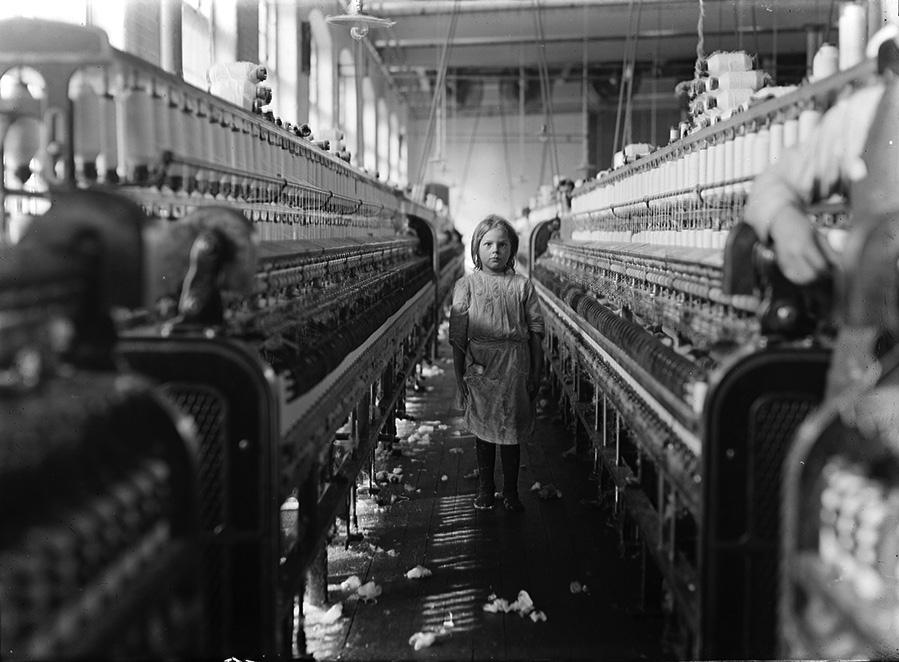
In 1914, they moved to Washington, DC. During World War I, Eleanor continued her humanitarian work by volunteering with relief agencies, including the American Red Cross.
In 1918, Eleanor discovered FDR’s affair with Lucy Mercer. She was heartbroken and soon branched out into her trademark “independent” lifestyle, while remaining married.
With the dawn of the 1920s, Eleanor became more politically engaged with women’s rights. She held several leadership positions with organizations including the League of Women Voters and the Women’s Trade Union League.
In 1921, FDR contracted polio. This would shape both of their lives immensely, as Eleanor shifted her role to tend to his increasing needs for assistance in his daily life.
Eleanor was recruited to be head of the Women’s Division of the Democratic National Committee in 1928.
In 1928, FDR was elected governor of New York for the first time; he was reelected in 1930.
In this same year, Eleanor would meet her dear friend and alleged lover, Lorena “Hick” Hickok, and was assigned Earl Miller (another alleged lover) as her bodyguard.
The National Child Labor Committee was formed in 1904 with the goal of abolishing all child labor.
That same year, Upton Sinclair conducted research on unjust working conditions in the meatpacking plants of Chicago for his 1905 novel The Jungle.
In 1912, the US Children’s Bureau was founded to monitor the home and work conditions of children.
World War I began on July 28, 1914.
In 1915, Guinn v. United States ruled Oklahoma’s grandfather clause and literacy tests for voting unconstitutional.
World War I ended on November 11, 1918.
In 1920, the League of Nations was founded to promote the resolution of international conflicts without war. The United States did not join the League. Suffrage for white women was passed with the ratification of the 19th Amendment.

ELEANOR ROOsEvELt vOtiNg, 1936.
In 1929, the third installment of the Geneva Conventions was published, advocating for fair treatment of prisoners of war and inspection of prison camps by neutral third parties.
The Great Depression also began in 1929 with the crash of Wall Street.
A chiLD LABORER PhOtOgRAPhED By LEwis w. hiNE fOR thE NAtiONAL chiLD LABOR cOmmittEE, 1908.
FDR won the 1932 Presidential election and entered office in 1933.
Between the years of 1933 and 1945, Eleanor served as First Lady of the United States.
In August 1943, she embarked on a tour of the South Pacific—a revolutionary act of political engagement for the first lady.

On April 12, 1945, FDR passed, ending both his presidency and Eleanor’s first ladyship.
In 1945, Eleanor was appointed as an American delegate to the United Nations (UN) and would serve as such until 1953. In her first stint with the UN, she chaired the United Nations Human Rights Commission and helped to write the 1948 Declaration of Human Rights.

FDR signed the Fair Labor Standards Act in 1938, limiting many forms of child labor.
In 1939, Marian Anderson performed her iconic concert at the Lincoln Memorial, hosted by Eleanor and FDR, and the Great Depression came to a long-awaited end.

World War II began on September 1, 1939, though the United States would not officially enter the war until the attack on Pearl Harbor on December 7, 1941. Following this attack, America established internment camps where Japanese citizens were held prisoner.
On August 6, 1945, the US dropped the world’s first atomic bomb on Hiroshima, Japan. A second would follow on August 9 over Nagasaki. World War II came to a close on September 2.
In 1947, the Cold War began between the US and the Soviet Union.
Child labor was directly prohibited for the first time in 1949 with the passing of an amendment to the Fair Labor Standards Act.
A viEw Of thE cROwD At ANDERsON's 1939 cONcERt, LiNcOLNmEmORiAL, wAshiNgtON Dc
mARiAN ANDERsON, 1940.
ELEANOR hOLDiNg A fLAg Of thE uN.
Eleanor spoke out against McCarthyism throughout the 1950s and advocated for racial equality as the Civil Rights Movement gained momentum.
The Korean War broke out in 1950 between North and South Korea, with America siding with South Korea. It would last for three years.
In 1954, Brown v. the Board of Education of Topeka ruled racial segregation in schools unconstitutional.

The Vietnam War began in 1955 (and lasted until 1975).
On December 1, 1955, Rosa Parks was arrested, sparking the Montgomery bus boycott. The widespread protest of Montgomery’s bus system lasted 13 months and ultimately resulted in the Supreme Court ruling that segregation on buses was unconstitutional.

In 1960, John F. Kennedy (JFK) was elected president.
In 1961, Eleanor was appointed to the UN again by JFK, where she served on the National Advisory Committee of the Peace Corps and the President’s Commission on the Status of Women.
Eleanor died on November 7, 1962, at the age of 78.
thE ARREst Of ROsA PARKs, 1955
JOhN fOstER DuLLEs, ADLAi stEvENsON, AND ELEANOR ROOsEvELt At thE uN
Glossary
by Kaushik Raghavan
Alpha Kappa Alpha: An historically Black sorority.
Assistant Secretary of the Navy: Second highest civilian office in the US Navy. Roosevelt’s time (1913-1920) in this position led to the creation of the naval base at Pearl Harbor and oversaw a $600 million ($15.2 billion today) expansion of the US Navy.
Bethune-Cookman: An historically black college and university (HBCU) in Dayton, Florida.
Bull Connor: The Commissioner of Public Safety in Birmingham, Alabama, from 1957 to 1963. A vocal opponent of the Civil Rights Movement.
Campobello Island: Summer home for Franklin on a Canadian island off the coast of Maine. It is now the home of Roosevelt Campobello International Park, with ownership shared between the United States and Canada.
Ceylon: British name for Sri Lanka.
Christmas Island: An island in the South Pacific with a US Navy Base during World War II; the site of a Japanese invasion in 1942.
Constitution Hall: A large theater in Washington, DC; also known as DAR Constitution Hall. Owned by the Daughters of the American Revolution.

Daisy Suckley: Distant cousin of Franklin and Eleanor who served as FDR’s archivist.
Daughters of the American Revolution (DAR): A conservative nonprofit volunteer women’s organization. Membership into the DAR is restricted to women who are directly related to white soldiers in the American Revolution. Their focus is on patriotism and preserving American heritage.
Dr. Robert Lovett: The doctor who diagnosed Franklin with polio.
Earl Miller: Eleanor's bodyguard and rumored lover.
Edith Wilson: Wife of Woodrow Wilson, the 28th President of the United States.
Eleanor Roosevelt: First Lady of the United States, 1933–1945. Married to the 32nd President of the United States, FDR.
“Happy Days Are Here Again”: Franklin Roosevelt’s 1932 campaign song. Written by Milton Ager and Jack Yellen.
Hyde Park: Hometown of Franklin Roosevelt in New York. His ancestral home, Springwood, is now a national historic site and the home of the Franklin Delano Roosevelt Presidential Library.
Internment of Japanese Americans: The unconstitutional jailing of 112,000 Japanese Americans from 1942 to 1946 within incarceration camps during World War II.
Irving Berlin: American composer and lyricist, known for works such as “God Bless America” and Annie Get Your Gun
James Cox: Democratic candidate during the 1920 presidential election; he lost to Warren G. Harding.
J. Edgar Hoover: The director of the Federal Bureau of Investigation (FBI) from 1924 to 1972. Fervently Anti-Communist.
PREsiDENt hARRy s. tRumAN AND fiRst LADy ELEANOR ROOsEvELt At thE 1956 DEmOcRAtic cONvENtiON.
Joseph Stalin: Leader of the Union of Soviet Socialist Republics (USSR) from 1924 to 1953.
Katy: Maid for the Roosevelt Family during Eleanor’s childhood.
Ku Klux Klan (KKK): a white supremacist organization.
Lorena “Hick” Hickock: A journalist and rumored lover of Eleanor.
Louis Howe: A journalist, known as the “Right Hand to the Roosevelts.”
Lucy Mercer: Former social secretary to Eleanor and mistress of Franklin.
Madame Souvestre: Eleanor's instructor at Allenswood, a boarding school in England.
Marian Anderson: A world-renowned Black singer.
Mary McLeod Bethune: A civil rights advocate and feminist; she served as an advisor to FDR during his presidency.
Minnie Fisher Cunningham: Women’s suffrage leader. The first executive secretary for the League of Women Voters, a group of women working to protect and expand voting rights.
Missy LeHand: The secretary to Franklin after Louis Howe’s death.
“My Day”: Eleanor Roosevelt’s daily newspaper column.
National Advisory Committee of the Peace Corps: A group that advises the president on the Peace Corps.
President Calvin Coolidge: The 29th Vice President and 30th President of the United States.
President Franklin Delano Roosevelt (FDR): 32nd President of the United States, who served an unprecedented four terms. Husband to Eleanor Roosevelt.
President Harry S. Truman: The 33rd President of the United States; he took office after Franklin’s death in 1945.
President Herbert Hoover: The 31st President of the United States.
President John F. Kennedy: The 35th President of the United States.
President Theodore Roosevelt: The 26th President of the United States. Uncle to Eleanor and fifth cousin to Franklin. Called “Uncle Teddy” in the play.
President Warren G. Harding: The 29th President of the United States.
Sir Winston Churchill: Prime Minister of the United Kingdom during World War II (1940–1945). He served a second term from 1951 to 1955.
United Nations: An organization established after World War II to ensure peace around the world.
Upton Sinclair: Author who wrote The Jungle, which detailed conditions workers faced in the meat packing industry.
Walter White: Former head of the National Association for the Advancement of Colored People (NAACP) from 1931 to 1955.
Warm Springs, Georgia: Frequent location of travel for Franklin. He traveled here for the “healing property” of the springs before turning it into a retreat for polio patients. Site of his death in 1945.
“(Won’t You Come Home) Bill Bailey”: A song written by Hughie Cannon and published in 1902 about a woman who regrets kicking her husband out.
Yalta Conference: The meeting of Winston Churchill, Joseph Stalin, and Franklin Roosevelt to discuss post-war Europe in 1945.
Playing by Yourself: The History of One-Person Shows
By Vivian Chace
With additional edits
Eleanor is a tour-de-force one-person play by Mark St. Germain. When you think of going to a play, you often imagine yourself watching more than one actor. Yet single-person performances have a rich history and “storied” past. In fact, they are one of the oldest forms of theater and continue to be one of the most successful and artistically viable means of performing. Let’s dive into the beautiful past of going it alone.
To actually discover the origins of one-person shows, we must look far beyond the formal start of theater, and even before recorded history itself. For centuries, spiritual leaders in all corners of the globe have performed narratives communicating spiritual messages, parables, and community histories using many of the same strategies and techniques actors use in one-person plays today. Notably, the oral traditions of shamans in Indigenous communities across North and South America include unbroken stories that have been passed down orally and performed annually for over 15,000 years. African griots, or community storytellers, function in a similar vein.
If you look hard enough, you’ll discover all of Western theater is rooted in one-person shows that served a similar purpose as the griots and shamans of Africa and the Americas. As you may know, our theater practices were handed down to us from the ancient Greeks, who used theater to discuss religion and their political exploits. They used a three-actor rule, which dictated that no play had more than three speaking performers, a rule that was observed by countless shows for hundreds of years. This rule was actually preceded by a lesserknown two-actor rule that only allowed for one single performer on stage and a dramatic chorus. In these shows, the single actor would be responsible for most of the artistic heavylifting while the chorus would occasionally chime in. As time passed, the rule became less and less strict, the chorus’s role grew more and
by Todd Brian Backus
more pronounced, and gradually monologues became dialogues. Thus modern theater actually began as one-person shows and grew into what we conceive of as “plays” today.
The Romans continued this tradition for the duration of their empire, which would become fertile ground for the bridge linking our version of one-person theater back to the ancient ones. Out from Roman monologues sprang the medieval traditions of the French troubadour and the English minstrel. Both artists were generally travelers who went from city to city singing and performing about major events, again usually relating to war or religion. What started as a practice of vagabonds slowly grew into a cultural institution, and eventually they became formalized institutions of the state where they served in courts for royalty. By the Renaissance, much of that kind of theater had become so formalized that it was far removed from the daily lives of common people. But the medium endured and the traditions continued outside of the halls of nobles, this time without scruples dictating content and good manners.
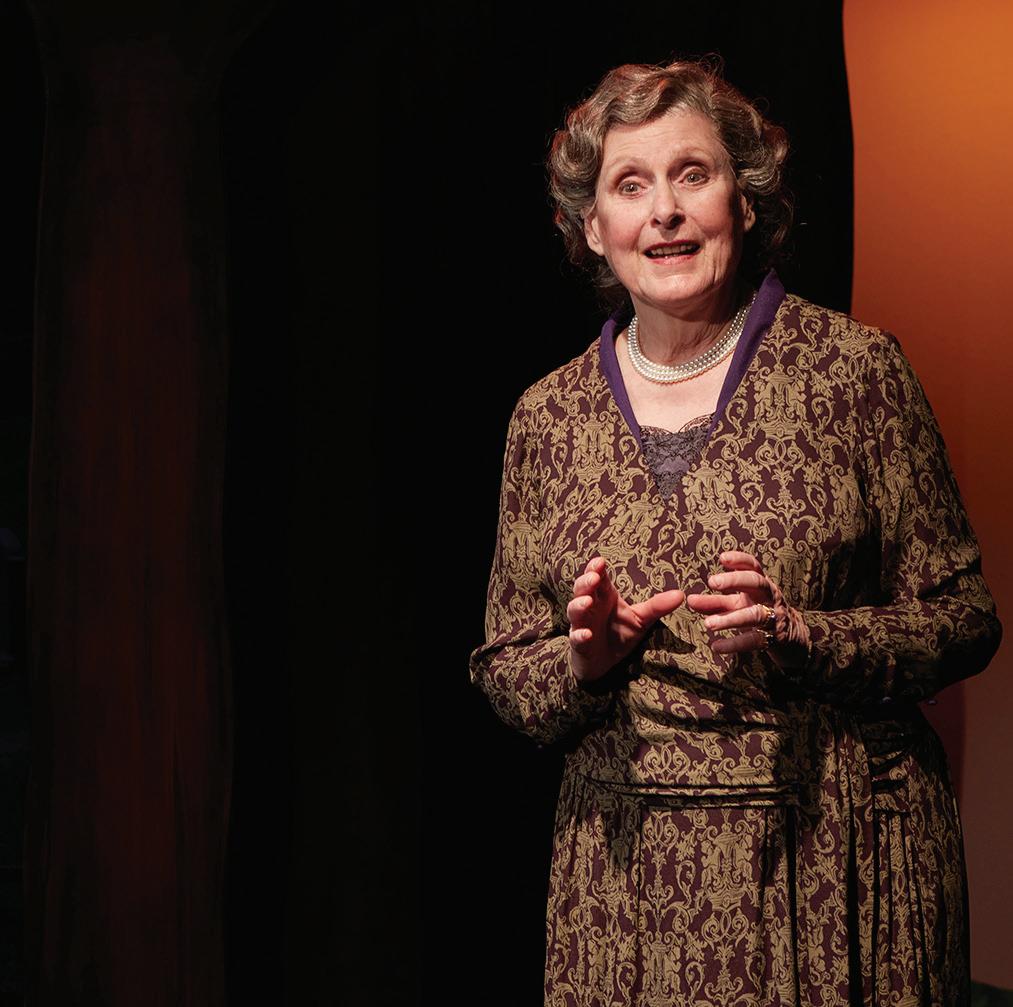
ELEANOR - KANDis chAPPELL (AEA). PhOtO By AARON RumLEy cOuRtEsy Of NORth cOAst REPERtORy thEAtRE.
In fact, the performance tradition that evolved in this way became quite crass and vulgar. Many of the pieces served to lampoon kings and queens and delve into their salacious affairs or political misdeeds. Capitalism and industry had developed to a point where these performers were no longer reliant on clergy and nobility for their livelihoods and naturally their content adapted to become more appealing to commoners, from whom they derived their income. This would continue to grow and develop until the first stand-up comedians evolved as an offshoot. At any rate, performance left the hallowed halls of the moneyed palaces and cathedrals and took its poets and fools to salon and saloon, where it would remain right up through the late 1800s. At that point, oneperson shows entered a golden age of sorts with the arrival of American vaudeville. Vaudeville was characterized by variety shows comprising unrelated performers that would tour through major cities and on steamboats. This style exploded in popularity after the American Civil War, and would continue its meteoric ascent until the development of cinema in the 1930s. Often its performers would appear alone on stage, and included everything, from clowns and mimes to freak shows, acrobats, and even drag performers like Claude Cahun. It was really here that what we think of as a one-person play took shape. Often a famous celebrity would perform all of the roles in a well-known play as a headliner to draw in more audience members.
Some reasons for the longevity of one-person plays include the low draw on resources, accessibility, mobility, and general flexibility. One-person shows are easier than other productions to tour because the set has to accommodate only one person. Actor availability or salaries are never an issue, and typically neither is paying a full, formal production staff. Often the actor is also their own manager, stage manager, and technical designer, making the whole process of getting the show on its feet far less complicated than multi-actor productions.
In fact, this flexibility has not only allowed oneperson shows to flourish, but has also been a driving reason for why they continue to occupy the artistic space that they do. As mentioned, dating back to the ancient Greeks, one-person plays have served as a powerful vehicle for political commentary, especially for the LGBTQ community. In fact, one of the first protests for trans rights happened in 390 CE. when a popular gender-bending performer was arrested mid-show, leading to mass rioting and the death of the king of the city. This tradition continues to this day with the work of Peggy Shaw and Taylor Mac, who are famous for their one-person shows A Menopausal Gentleman and The Face of Liberalism, respectively, but the activism is not limited to that sphere alone.
Anna Deavere Smith has created shows where she meticulously copies the mannerisms of people she interviews. She then uses these “reproduced” interviews, all coming from one person on stage, to explore widely differing beliefs about charged topics like the Crown Heights riots or the Rodney King uprising. Similarly, Flemish performer Valentijn Dhaenens has used one-person shows in creative ways to shine light on the horrors of war and the hollowness of political rhetoric. In one of his shows, BigmoutH, he recites dozens of famous speeches from historical figures across history back to back in an effort to show how, while many of the speakers held widely different ideas, they all used more or less similar methods of speaking to communicate them.
The malleability that one-person shows can offer has meant that artists have rarely had to fear losing funding because they might be saying something unpopular, and has allowed people who have traditionally lacked the resources to find themselves on stage. While Eleanor may appear far flung from work like this, it exists in a clear lineage of storytelling and performance from the Greeks right down to the modern day. It may seem silly to say, but millions of people over thousands of years working in hundreds of ways to address countless issues made sure you could see what you’ll see here at Portland Stage!
Polio and Vaccines: Things of the Past?
by Todd Brian Backus with research by Max Lerin
As we reflect on what issues in this play are relevant to today, discussing polio and vaccines felt imperative. Polio so clearly impacted not only President Franklin Roosevelt's life, but also the lives of his wife Eleanor, their five surviving children, and their staff. Franklin died ten years to the day before the results of Jonas Salk’s polio vaccine trial were shared publicly. While Franklin wasn't able to receive the benefits of this medical marvel, it is worthwhile to explore the history of polio, the success of the vaccine, and how vaccines work in general.
Polio infections are asymptomatic for up to 70% of people who become infected with the virus. Another 25% will only have mild flu-like symptoms, while the final 5% will deal with symptoms ranging from paralysis to death. Franklin Roosevelt was struck with aches and pains that forced him to retire to his bed early one day; this affliction ultimately left him without the motor control of his legs for the rest of his life. While he was able to stand and walk with the use of metal braces, those acts were strenuous and painful for him until the day he died.
Polio is spread from person to person by infected droplets from sneezes or coughs, as well as tiny, often invisible, amounts of poop. This transmission can occur even when the infected person shows no sign of disease. Due to the unsanitary nature of cities in the late 19th century, most children were infected with polio at a young age when they still benefited from antibodies from their mothers. Increased sanitation in the early 20th century meant Franklin Roosevelt (and many others) didn't encounter the virus until much later in life when he was no longer protected.
In 1949 medicine made a breakthrough when John Enders, Thomas Weller, and Frederick Robbins successfully cultivated polio in human tissue at Boston Children's Hospital. This later led to physician Jonas Salk creating an inactivated (or weakened) polio vaccine

in 1955. After introducing the vaccine to the public, annual cases in the US dropped from 58,000 in 1956 to 5,600 in 1957, a 90% reduction. The polio vaccine is so effective it protects over 99% of people who receive all recommended doses.
The miracle of vaccines might not seem as impressive, especially to those who grew up without fear of measles, mumps, rubella, polio, or smallpox (the only disease to be eradicated by vaccines) thanks to high vaccination rates at the end of the 20th century. But how high do vaccination rates need to be in order to keep outbreaks at bay? Herd immunity is a term that comes from the raising of livestock, but it has been applied to humans as well. Scientists discovered that when enough of a population has immunity to a disease, the whole population is more resistant to it. This is because the viruses have fewer hosts to infect and live off of, decreasing the chances of transmission.
A POstER fOR thE POLiO vAcciNE fEAtuRiNg wELLBEE, thE cDc mAscOt
You have probably heard of the measles outbreaks in Texas this past year due to low vaccination rates, but did you know that to avoid outbreaks a population needs to be 95% vaccinated to keep measles from circulating? In Gaines County, the epicenter of the West Texas outbreak, only around 82% of kindergarteners were vaccinated for measles in the 2023–24 school year. Just 13% of kindergarteners in Gaines County were the difference between an outbreak and herd immunity.
Each virus has a different threshold for herd immunity based on a formula derived by the contagiousness of each disease. Polio, for instance, is less infectious than measles and only needs an 80% vaccination rate. COVID-19 only needs about a 66% vaccination rate, but rapid mutations and anti-vaccine sentiment made that a hard goal to hit in the early years of the pandemic. In 2022 Dr. Gloria Rey of New York State warned that, "Polio vaccination coverage in the region is at 79%, the lowest
since 1994." Could another polio outbreak be on the horizon?
Earlier this year Senator Susan Collins voted to confirm Robert F. Kennedy as US Secretary of Health and Human Services after he assured her that he believed the polio vaccine was safe and effective. Since his confirmation, Kennedy has fired all 17 members of the Centers for Disease Control and Prevention’s (CDC's) immunization advisory committee and replaced some with antivaccine activists. In fact, CDC director Susan Monarez was fired in late August over a dispute about vaccines. Moves like this have emboldened other antivaxxers in leadership roles, such as Florida Surgeon General Dr. Joseph Ladapo, to ban all childhood vaccine mandates. He went further to say the state legislature could remove the mandates for measles and polio vaccines, which raises the question: Are FDR's medical experiences a thing of the past? Or will more Americans deal with the devastating effects of polio?

PREsiDENt fRANKLiN DELANO ROOsEvELt iN his whEELchAiR with fALA, thEiR scOttiE, AND RuthiE BiE.
Watch
Recommended Resources
by Editors
The Roosevelts: An Intimate History directed and produced by Ken Burns
Eleanor, First Lady of the World (1982) directed by John Erman
The First Lady (2022) directed by Susanne Bier
Read
Eleanor and Hick: The Love Affair That Shaped a First Lady by Susan Quinn
The Autobiography of Eleanor Roosevelt by Eleanor Roosevelt
Eleanor by David Michaelis
A Passionate Mind in Relentless Pursuit: The Vision of Mary McLeod Bethune by Noliwe Rooks
Listen
“Eleanor Roosevelt” Historically Badass Broads by Maura Kanter and Chloé Lexia Worthington
“Eleanor Roosevelt” Short History Of… by Noiser
“First Ladies | Eleanor Roosevelt | 3” American History Tellers
Get Involved
Maine Online Voter Registration: https://registertovote.sos.maine.gov/OnlineVoterRegistration/Registrationistration
Become a Member of the NAACP: https://naacp.org/take-actionion | NAACP
Take Action | American Civil Liberties Union: https://www.aclu.org/actionAction | American Civil Liberties Union

Portland Stage Company Education Programs
Student Matinee Series
The Portland Stage Student Matinee Program provides students with discounted tickets for student matinees. Following the performance, students participate in a conversation with the cast and crew, which helps them gain awareness of the creative process and encourages them to think critically about the themes and messages of the play.
Play Me a Story
Experience the fun and magic of theater on Saturday mornings with Play Me a Story! Ages 4 – 10 enjoy a performance of children’s stories followed by an interactive acting workshop with Portland Stage’s Education Artists for $15. Sign up for the month and save or pick individual days that work for you. Build literacy, encourage creativity and spark dramatic dreams!
Shakespeare Teen Company
In April and May of 2026, students will come together as an ensemble to create a fully-staged Shakespeare production of Romeo and Juliet in Portland Stage’s studio theater. Participants in grades 7-12 take on a variety of roles including acting, costume design, marketing, and more!
Vacation and Summer Camps
Dive into theater for five exciting days while on your school breaks! Our theater camps immerse participants in all aspects of theater, culminating in an open studio performance for friends and family at the end of the week! Camps are taught by professional actors, directors, and artisans. Students are invited to think imaginatively, critically, and creatively in an environment of inclusivity and safe play.
PLAY Program
An interactive dramatic reading and acting workshop tour for elementary school students in grades pre-k through 5. Professional education artists perform children’s literature and poetry and then involve students directly in classroom workshops based on the stories. Artists actively engage students in in small group workshop using their bodies, voices, and imaginations to build understanding of the text while bringing the stories and characters to life. PLAY helps develop literacy and reading fluency, character recall, understanding of themes, social emotional skills, physical storytelling, and vocal characterization. The program also comes with a comprehensive Resource Guide filled with information and activities based on the books and poems.
Directors Lab
Professional actors perform a 50-minute adaptation of a Shakespeare play, followed by a talkback. In 2026 we will be touring A Midsummer Night's Dream to middle and high schools. After the performance, students engage directly with the text in an interactive workshop with the actors and creative team. In these workshops, students practice effective communication, creative collaboration, rhetoric, and critical analysis. The program also comes with a comprehensive Resource Guide filled with information and resources about the play we are focusing on. Directors Lab puts Shakespeare’s language into the hands and mouths of the students, empowering them to be the artists, directors, and ensemble with the power to interpret the text and produce meaning.

Portland Stage Company
Anita Stewart Artistic Director
Martin Lodish Managing Director
Artistic & Production Staff
Todd Brian Backus Literary Manager
Ted Gallant Technical Director
Myles C. Hatch Stage Manager
Carrigan O'Brian Danish Company Manager & Co-Apprentice Coordinator
Elliot Nye Props Coordinator
Mary Lana Rice Production Manager, Lighting Supervisor, & Resident Lighting Designer
Seth Asa Sengel Asst. Production Manager, Sound Supervisor, & Resident Sound Designer
Susan Thomas Costume Shop Manager
Administrative Staff
Paul Ainsworth Business Manager
Covey Crolius Development Director
Erin Elizabeth Marketing Strategist
Cassie Endicott Assistant Box Office Manager
Allison Fry Grants Coordinator
Aressa Goodrich Marketing & Graphic Design Associate
Lindsey Higgins Development Associate
Katie Hodgdon House & Concessions Manager
Savannah Irish Marketing Project Manager
Jennifer London Company Manager, Apprentice Coordinator
Carrigan O'Brien Audience Services Associate
Stacey Salotto-Cristobol Education Assistant
Don Smith Audience Services Manager
Julianne Shea Education Administrator, Apprentice Coordinator
Adam Thibodeau House Manager
Michael Dix Thomas Education Director
Apprentice Company
Bridget Beecham Props Apprentice
Skyler Brianna Directing & Dramaturgy Apprentice
Zoë Cheever Electrics Apprentice
Hannah Cline Costumes Apprentice
Rori Haft Stage Management Apprentice
Lauren Kensley Costumes Apprentice
Max Lerin Directing & Dramaturgy Apprentice
sam lucas Company Management Apprentice
Eli Mowry Education Apprentice
Jack Allen Murphy Education Apprentice
Sidney Phillips Stage Management Apprentice
Kaushik Raghavan Directing & Dramaturgy Apprentice
